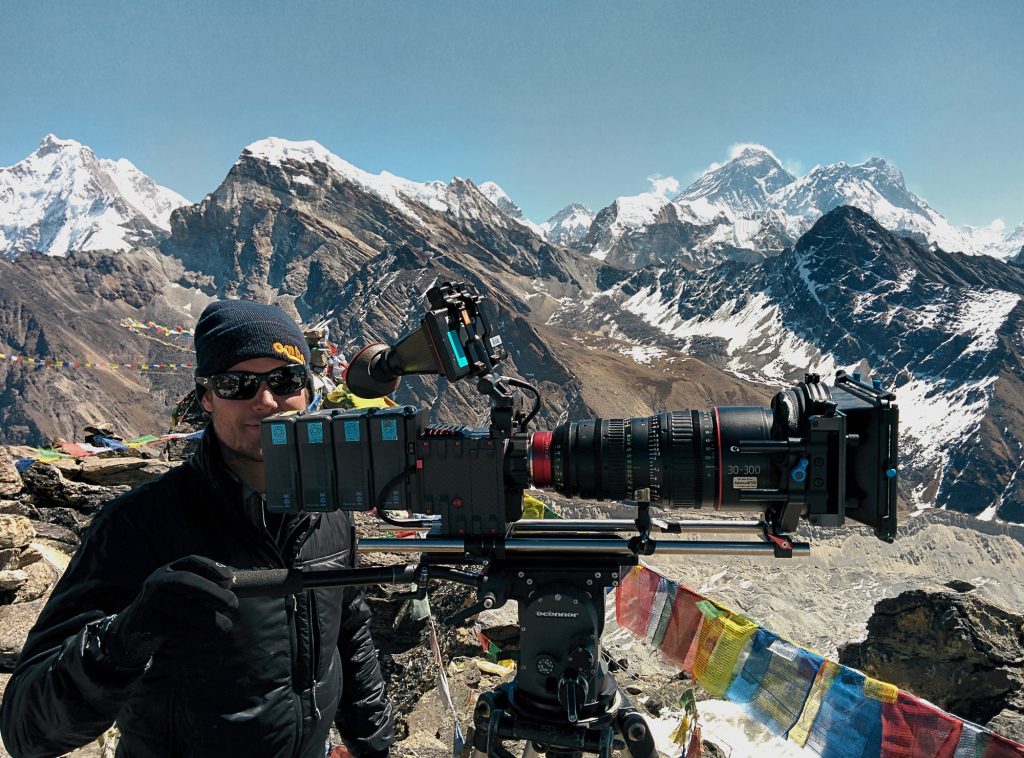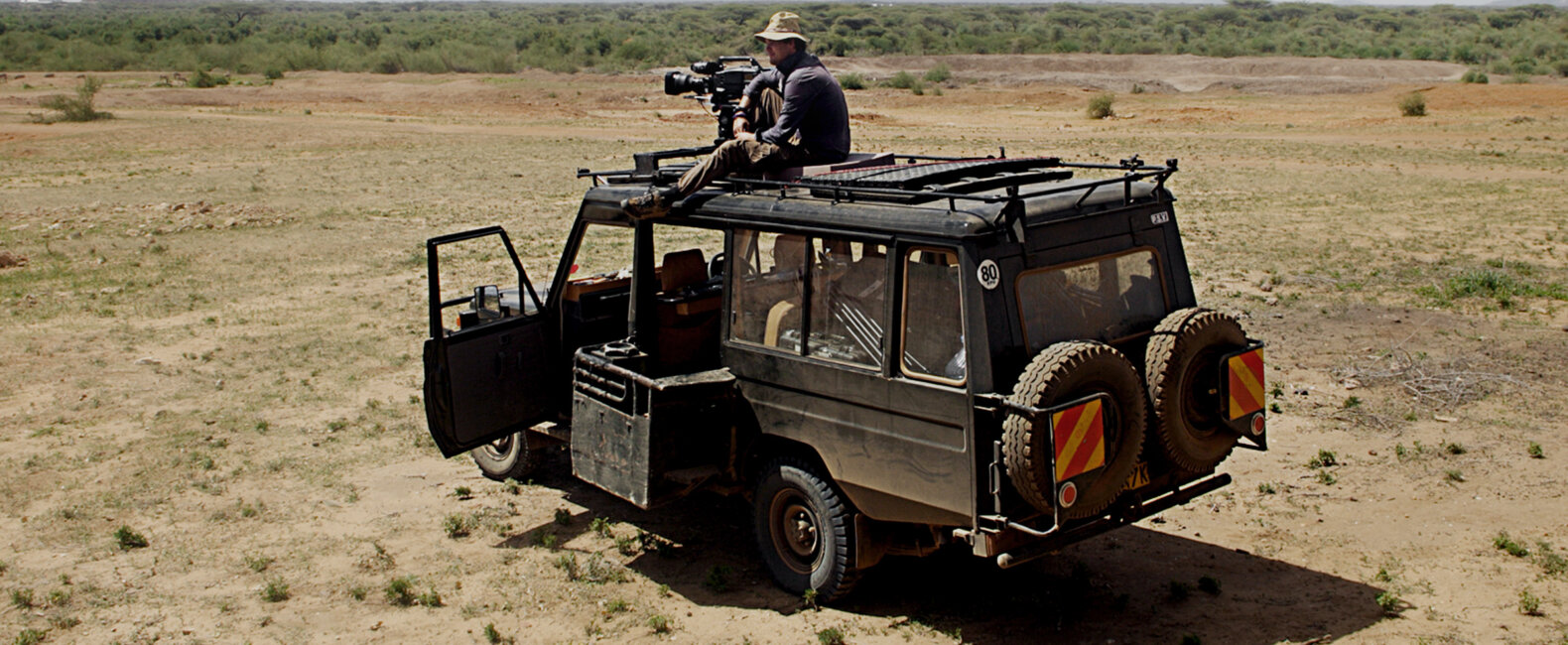When Planet Earth first aired in 2006, it showed us our world in a way we’d never seen it before. It was an awe-inspiring example of not only the beauty of nature, but also the power of cinematography. It was a foreshadowing — or maybe even the catalyst — of an increasingly cinematic approach to nature filmmaking. Last year, a decade after the original series premiered, the BBC aired Planet Earth II. Once again, it challenges the boundaries of what we thought was possible on film, and it expands our understanding of the natural world around us.
We recently talked to Jonathan Jones — founder of Ember Films and a member of the small, elite team that brought Planet Earth II to life — about the perils and glories of creating one of the most highly anticipated nature shows of the decade.
Here’s Jonathan.
How did Planet Earth II start?
We started this project about three years ago. Originally the program wasn’t even called Planet Earth II. It was something else with a slightly different brief. But as the project progressed, it slowly became Planet Earth II, which meant the editorial style had to change — really the style overall. Originally it was all going to be in 6K, but that didn’t quite work for some photographic reasons — the main reason being that it’s very hard. But it was all 4K+. And either way, it was very exciting to be a part of it.
What does the brief look like for a project this big?
Well… it’s broad. Because above everything else, you’re after behavior. It’s completely different from a movie script or a film where you have some level of control over what your subject is doing. We’re looking for things that are scientifically known to happen — say, beetles on a desert dune that use a part of their shells to collect moisture so they can hydrate — but are completely uncontrollable. So you start with the science, but then you try to be in the right place at the right time, and at the moment when everything comes together. Many times on Planet Earth II, we were trying to capture behavior that had never been captured before.
So the BBC tells you what they want and you try to find it?
Usually what we’re given is a wish list story. So it’s like: “If you can capture these things, that would be amazing.” But things almost never work out that way. The weather is not in your favor. Circumstances happen and you have to twist the story a bit. Or you might see something amazing that you weren’t expecting, like the sequence with the iguana outrunning the snakes. That wasn’t what that crew was there to film. But they saw it happening, and they were like, “Oh, look over there. That’s cool!” You just never know.
Where do these wish lists come from? Scientists?
So every episode has a producer, and it’s their role to create the structure for the show. They’re the ones who hire the right camera crews. Because depending on what you’re trying to capture, you might want someone who’s great at macro photography, or someone who can shoot from a helicopter. Some guys like to sit in a hot, sweaty hide for weeks. Some guys like to go underwater. What ends up forming is this weird team of people who all have very different skills. That’s part of what gives the show such great variety.
Do you need a background in zoology to shoot for a show like this?
In the past I would have said yes. But it’s less and less true nowadays. Nine times out of ten you’re working with a scientist who has either witnessed the behavior you’re after, or published a paper on it. They’re part of the team. So you have that. Plus, as camera technology has advanced, it’s become much more involved than just capturing an image. Now it’s about how the camera moves, how the image tracks alongside these behaviors that are unfolding. It’s much more dynamic. So you really need someone focused on the science and someone focused on the filmmaking.
How many people were involved with this project?
The principle cinematography team was just 12 people. And then there are a lot of other camera guys who capture extra footage. But actually, when you break it down it’s quite small. For each episode there’s a producer, an assistant producer, a researcher, and a camera team. Sometimes you’re out there for a month, and it’s just the two of you. So you have to plan ahead. You can’t just call up a rental house and say, “I’ll have a wider lens, please.” You have to plan ahead for everything, because you’re about to be stuck on a mountain with whatever you’ve decided to bring. It’s a very different kind of filmmaking. But the cool thing is you don’t need a big crew to create an epic film. You just need some imagination.
You personally went out into the field for these Planet Earth II episodes?
Yeah, definitely. I was involved in every show except the “Jungles” episode.
What was the most challenging location?

It was probably the one that sounds the nicest. They phoned us up and said, “We’ve got a shoot we want you to do in the Seychelles.” We’re like, “Yes. Fantastic.” It was for the opening episode in the islands. But once you get there after a series of small boat rides, you end up on this tiny island that is actually sub sea level; and it’s the most mosquito-ridden place I’ve ever been to in my life. No exaggeration: our arms were black with them. We’re smacking them and we’re bleeding. So at that point we were like, “Hang on, this isn’t the Seychelles dream we had in mind.”
But truly, every location has its own challenges. We shot in a desert where the sand had metal ore in it. If it gets inside the camera, the camera blows up because it acts like a magnet. So we’re filming in sandstorms with a Phantom Flex4K — new out of the box — that was sent to us in Namibia. It was like Christmas! But when we came back from the shoot, the Phantom logo had been sandblasted off. That’s how hard the wind was blowing.
Do you lose a lot of equipment making these things?
Not really. Things break sometimes, but we keep everything in waterproof Pelican cases and never leave them standing open. Monkeys nick things — it happens a lot. But all in all, we had very few things go down. The cameras we use are so reliable.
How much filming goes into every episode? Do you throw out a lot?
Oh, yes. It usually takes about a month of shooting to get five minutes of used footage. But that’s just a part of it. Planet Earth II is such an ambitious thing. Sometimes you have shoots that fail entirely. You could go to a remote country to get footage of a certain animal and never see it. You end up with some shots of trees. And a lot of it is seasonal; so if you fail, you’ll have to wait at least another year to try again.
What were the most difficult shots to capture in terms of cinematography?
It’s probably not what you’d expect. Our go-to lens for most of the show was a 50mm to a 1000mm. And anyone who understands photography knows how difficult it is to capture a fast-moving animal at 1000mm, hold focus, and move smoothly — all while being eaten alive by mosquitos or whatever. That’s still the hardest part. Another difficult thing now is macro, when you’re shooting at 5K, 6K. Your field is tiny. But it’s funny, even with all of the advances in cinematography, the hard part is still the simplest: capturing fast-moving animals with a long lens.
What do you do while you wait for the action?
That’s it. You wait. If it takes five weeks, you wait five weeks.
How often do you miss things?
There’s always stuff that happens when you’re not ready. Sometimes you see it happening and you just can’t get there. In the jungle, you’ll hear something happening but you can’t find it. So you’re mostly missing stuff. But the important thing is to commit to where you are. If you’re indecisive and keep moving around, that’s the worst thing you can do. You need to sit and wait. You have to be very calm so when the action does start, you’re not all excited. You have to be able to think instantly about sequence. You might see only one thing happen in five weeks, so you have to get your close-up; you have to get your wide, your mid shot, your establishing shot. You wait for weeks and then it all might happen in two minutes.
Do you take survival training?
It depends on where we’re going. When we’ve shot in areas of unrest, we’ve been taught what to do if we’re kidnapped. We’ve been taught what to do if somebody falls down a crevasse and their leg gets ripped off. But most of the training is prevention.
What should you do if you get kidnapped?
The first rule about being kidnapped is don’t get kidnapped.
Do you know how to use a butterfly knife?
Oh, yeah. We’ve got knives on us all the time. Sometimes when we’re in a place like the savannah, we’ll have a guy with us who has a rifle. But one of the big things with animal filming is you’re choosing to be in that place. We’ve put ourselves in that situation. So if a lion comes up on us —

You just gotta take it.
You just gotta take it. The worst thing you could do is shoot an animal. You might fire a warning shot. But nothing more.
Why is Planet Earth so much better than most nature shows?
There isn’t one particular thing. It’s the combination of everything, really. You put all those ingredients together, and you’ve got a really tasteful dish. Where some shows fall down is the scripts are cheesy, the photography is quite quick, and there are lots of flash frames. It’s just a different approach. But when you watch Planet Earth, it’s like you’re going to the movie theater to watch a film.
What’s your favorite part of these shoots?
As much as I love the animals and the cinematography, I really love when the weather gets bad and you have to shut down. When you can take a moment and not worry about getting the shots — just take in the elements and the scene and go, “Wow, this is amazing.” But then instantly the weather clears, and you’re right back on it.


















































































